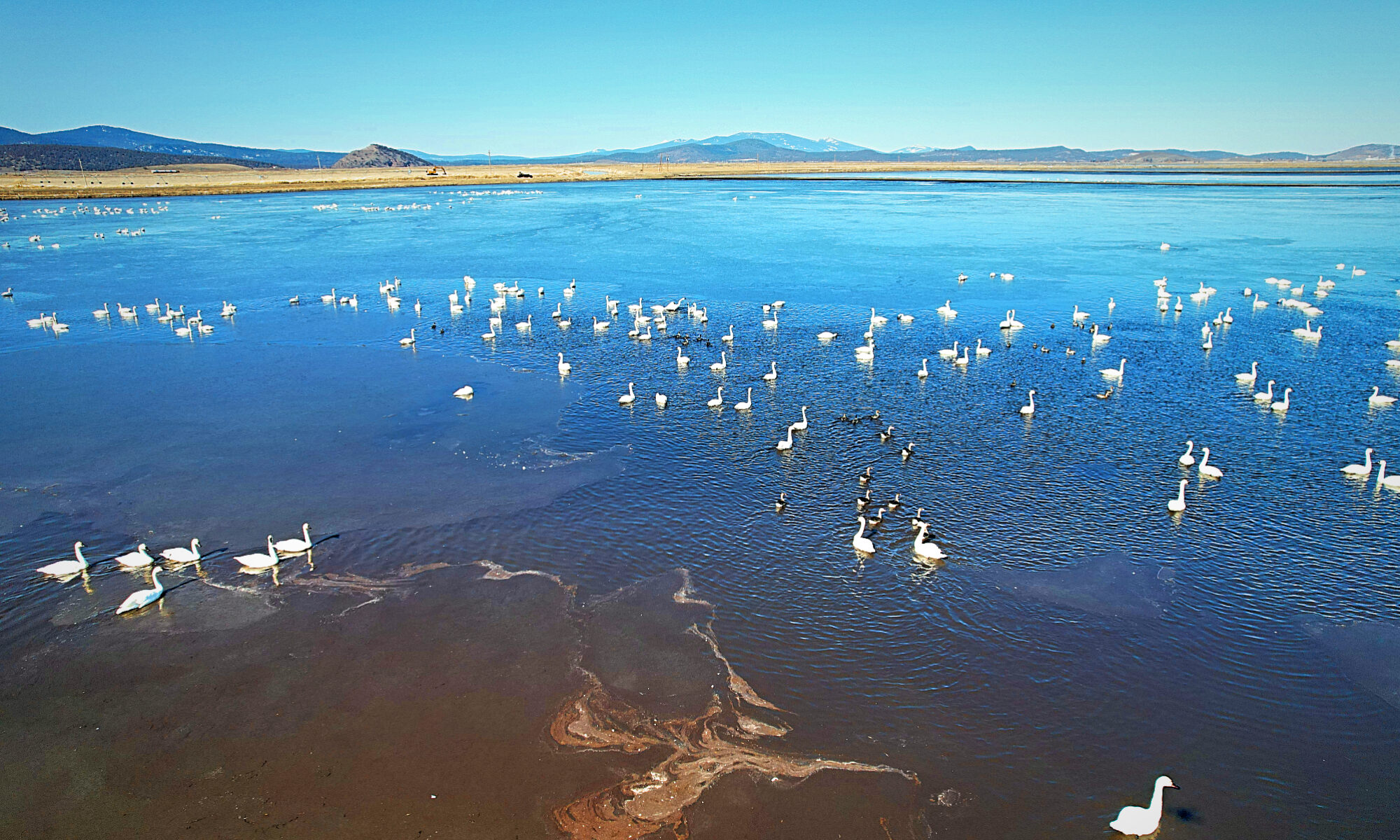This article appeared on Page 10 of the January 2023 edition of the Herald And News’ BASIN AG NEWS. You can also read the full edition of BASIN AG NEWS at KWUA.org,
In the still of twilight, on a cool, calm, crisp morning; the sound of Canada Geese coming off their roost to go feed in a nearby field echoes across the landscape. Within minutes, as the day begins to make its mark, whistling wings are heard with the accompanying cry of mallard hens, calling for company. As the sun finally pushes over the crest of the Klamath Hills, the valley erupts with countless songs sung by the hundreds of species of migratory birds resting in the area managed by Klamath Drainage District (KDD).
Waterfowl and shorebirds migrating along the Pacific Flyway don’t recognize borders. For them, the term “wetland” is viewed in the literal sense. Land with water on it, particularly when it contains food resources, is potentially suitable habitat, whether it’s a privately-owned field, a drainage ditch, or a national wildlife refuge.
For the last decade, the Bureau of Reclamation’s operation of the Klamath Project has largely been governed by a hydrological model directing how much water must remain in Upper Klamath Lake for endangered shortnose and Lost River suckers and how much has to be released for threatened coho salmon in the Klamath River. The model also dictates how much and at what times water can go to Lower Klamath and Tule Lake National Wildlife Refuges. There are separate formulas and rules in the model for water going to farms and agriculture. In accordance with the model, over the last three years, just like farms and agriculture, both refuges received little or no water.
In the absence of adequate habitat conditions in Tule Lake and Lower Klamath, migrating waterfowl and shorebirds have been forced to find it elsewhere. Nowhere is the concentration of wildlife more apparent than in Klamath Drainage District (KDD), which comprises the reclaimed portion of Lower Klamath Lake in Oregon.
Over the last three years, the water used by KDD in the fall and winter, which occurs separate from the Klamath Project under district-owned water rights, has provided the majority of waterfowl and shorebirds habitat in the Klamath Basin. As a result, birders and other wildlife enthusiasts have quickly learned that KDD provides some of the best wildlife viewing opportunities in the Klamath Basin.
According to Scott White, the general manager of KDD, “landowners in the district recognize the importance of wildlife on their lands and take great pride in the close connection between their farming operations and the habitat it provides.”
“While most of the lands within the district are privately owned, we have gotten accustomed to having the public driving around, stopping, and viewing wildlife. So long as people don’t trespass, stay on public roads, are mindful not to block driveways and maintenance roads, and are generally respectful, we are happy to have them visit the district.”

According to White, some of the best places to view wildlife in the district are conveniently located along public roads. “Township Road takes you right through the heart of the district,” according to White, including a portion of the refuge within KDD known as Area K. The dirt roads along the Klamath Straits Drain are also public land, though White cautioned Reclamation is still irrigating these lands and roads may be blocked because irrigation lines are across the public roadways.
Running along the Oregon-California border, Stateline Road also provides ample wildlife view opportunities both in KDD and the refuge. Along Stateline Road one can also see the only water being delivered to the refuge, through Ady Canal, which KDD owns and operates. These deliveries are helping maintain Unit 2, which is the only area of the refuge presently containing water.













